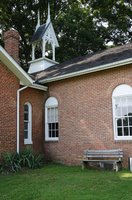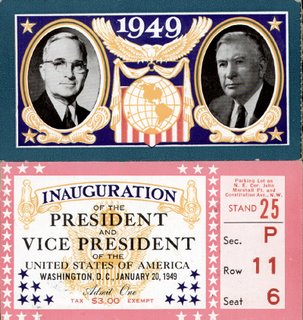




My interest in Cecil County's "Northwest Barrens," brought us once again to the area, with some pleasing photographic results, and a slightly better understanding of the area. The area reminds me of one of those places described in the book "Gone to Croatan: Origins of North American Dropout Culture," but somebody will need to do a lot more research to see if that is truly the case.
Anyway, today's pictures are from Saint Patrick's Church near Pilot Town, Maryland - well not the real Pilot, which is under water, but the part that remains. The church was built in 1819 by Irish immigrants, judging by the headstones.
Photos: Canon EOS 20D & 5D © 2006 Falmanac
Jul 29, 2006
Country Churches: Saint Patrick's
Jul 27, 2006
Jul 25, 2006
Jul 24, 2006
Jul 23, 2006
Mount Zoar Cemetery

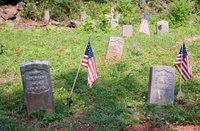

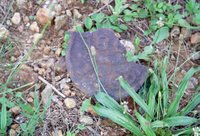
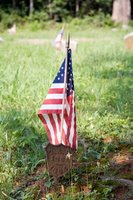
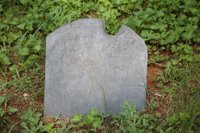
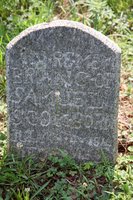
I have never seen so many Civil War veterans buried in a small northeastern Maryland graveyard as this. The fact that they are mostly from the USCI (United States Colored Infantry) makes it that much more unusual. Quite a few of Cecil County's freedmen must have enlisted in the Army. Portdeposit.org states " The Cecil Democrat reported that 25 African-American men enlisted at Port Deposit to fight in the War Between the States and they are credited toward Philadelphia's total in 1864." A walk through the cemetery confirms this, as the headstones show regiments that were formed in both Pennsylvania and Maryland. Amongst the stones, I counted the 3rd, 4th, 25th, 30th, & 43rd USCI regiments.
And curiously, two members of the 5th Massachusetts infantry, which wasn't a colored unit at all. The 5th was a hundred days unit that spent most of its time guarding Baltimore. How'd two men from the 5th end up buried in an AME churchyard? I couldn't find any evidence that these veterans were of African descent, but I couldn't find anything to say they weren't either. As for them ending up in Mount Zoar, the regiment's history (and the OR t00), says the unit was sent to monitor the 1864 elections on the Eastern Shore of Maryland. The unit was spread throughout the entire shore and perhaps these two fellows ended up in Cecil County and took a liking to the place. And yet, I found one of them, Lewis P Hopkins, listed as living in Worcester, Massachusetts in 1910, making his living as a "britannia-worker," whatever that is. Anyway, it's a puzzle that I can't solve and it bothers me to no end.
The USCT (United States Colored Troops) represented at Mount Zoar include some of the hardest fighting units of the branch. Several fighting at Chaffin's Farm, Virginia where over a dozen USCI members earned the Congressional Medal of Honor, some posthumously, including Albert Hilton of Havre De Grace, MD - just across the river from Mount Zoar. It was this engagement that finally proved the worth (No, I don't care how many times you saw "Glory") of the colored troops to the U.S. Army. Said General Butler, "I want to convince myself whether the negro troops will fight, and whether I can take, with the negroes, a redoubt that turned Hancock's corps on a former occasion," and that's just what he did at Chaffin's Farm.
After the war, there were several GAR Chapters devoted to the USCI and Cecil County even had it's own independent colored veterans organization for a time. There was also a colored GAR post in Columbia, PA, which was a short ride up the Susquehanna via the nearby Columbia and Port Deposit Railroad.
There are those who would have us believe that Cecil County was 100% Secesh - nothing could be further from the truth.
"Imagine the feelings of our people at the first sight of colored men in soldier's uniform! When the call was made general, many responded. When later on, a recruiting office was opened in Cecilton by Lieutenant Brown, some of our boys who had joined the army were selected to come, now as soldiers, to their own home, and induce others to enlist. Under "shoulder arms," they would march through the little village, "as proud as Lucifer" and without fear.
While Lieutenant Brown and his men remained, many volunteered. Some slaves, whose masters still held them in bondage, came to the recruiting office, enlisted and placed themselves under the protection of the flag. They were called "United States Colored Troops." - Levi Jenkins Coppin 1919
Photos: Canon EOS 5D with Canon EF 28-135mm f/3.5-5.6 IS USM lens.
© 2006 Falmanac
Jul 22, 2006
Country Churches: Mount Zoar AME

"African-American men began to vote in Cecil County in 1870, although most were segregated into certain sections of territory - usually the edge of town or isolated communities such as Cokesbury or Mt. Zoar - in the "Northwest Barrens*." - Erika L. Quesenbery 2003
"To the south, south-east and south-west of Brown's ford (in Lancaster County), beginning but little more than a mile away, lay thousands and thousands of acres of land, to which no one at that time possessed a title. The land was mostly grown up with pine and scrub-oak, or black jack, and in summer time was used as pasture land for the cattle of many small farmers who lived near. At such times it would be dotted over with small herds of cattle, one in each herd wearing a bell, the sound of which was well-known to the owner or his boys, who went out to hunt them if they did not return at the proper time. This they mostly did, and as the summer sun approached the western horizon you could see numerous small herds of cattle, each led by the "bell cow," wending their way quietly toward their homes. Here and there all through this wilderness stood the log hut of a negro, and sometimes of a white man, built of pine logs and covered with boards or slabs of the same material. Hard by was a small lot or clearing, fenced in and used for a garden. The occupants of these huts picked up a subsistence by working by the day for farmers in Lancaster, Chester and Cecil counties; and sometimes in winter by chopping wood, threshing with the flail, dressing flax and other pursuits of a similar character." - Ellwood Griest 1873
*Ironically, a lot of what was called "barrens" in Maryland was not, as the locals believed, poor farm land, but land that had been deforested by Indians over the centuries to provide grasslands for game. Thus, in some cases, the wasteland grudgingly sold to the freedmen may have been prime agricultural property. Go here for more info on the Maryland Barrens.
Camera: Canon EOS 5D with Canon EF 28-135mm f/3.5-5.6 IS USM lens.
© 2006 Falmanac
Jul 21, 2006
Dorsey Station


The Peach Bottom Railway dreamed big, aspiring to build a railroad that stretched from Baltimore to the coal fields of Broad Top, Pennsylvania. The company started construction on both sides of the Susquehanna in the 1870's hoping to bridge the river at Peach Bottom, PA, or perhaps I should say Peach Bottoms as there were two towns named Peach Bottom directly across the river from each other, one in York County and one in Lancaster County. There was only one problem, the company couldn't afford to bridge the wide, flood prone, Susquehanna. Thus the two lines went their separate ways, the line on the western side (York County) eventually becoming the Maryland & Pennsylvania Railroad {MA&PA}, and the eastern line (Lancaster County side), becoming the Lancaster Oxford & Southern Rialroad {LO&S}. Today's pictures are of the LO&S Station at Dorsey, which is a stone's throw from Peach Bottom, PA - on the Lancaster side. There isn't much left of the old LO&S, which finally went under during WW1 when wartime steel prices made it more profitable to scrap the railroad than to operate it!
Camera: Canon EOS 5D with Canon EF 28-135mm f/3.5-5.6 IS USM lens.
© 2006 Falmanac
Jul 20, 2006
River Corner Mennonite Church
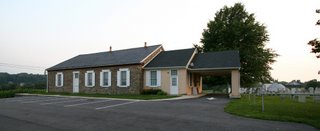
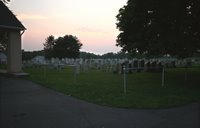
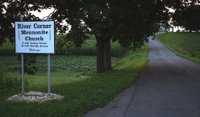
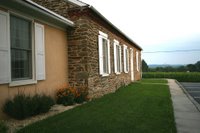
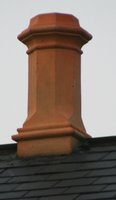
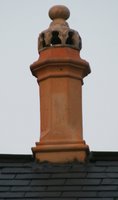 If you're ever rambling 'round the Susquehanna River in Lancaster County, PA, there's nothing like a good meal at the Conestoga Wagon Restaurant (always get the special). Afterwards, check out the area, it's historic, sometimes quirky, and relentlessly picturesque.
If you're ever rambling 'round the Susquehanna River in Lancaster County, PA, there's nothing like a good meal at the Conestoga Wagon Restaurant (always get the special). Afterwards, check out the area, it's historic, sometimes quirky, and relentlessly picturesque.
Photos: River Corner Mennonite Church, Conestoga, Pennsylvania. Canon EOS 20D © Kim Choate 2006
Jul 19, 2006
Gray Gables
 "Gray Gables is an 1880s shingle sided frame house of modest scale that is significant in Maryland as an important example of the Queen Anne style house that was popular in this century in the last quarter of the 19th century. The major factors that set Gray Gables apart from other examples in the state are the rural location of the house and the high level of integrity of its original character. In general, the Queen Anne house expressed in the full character found in Gray Gables was built in urban and suburban areas, rarely in rural settings as northeastern Harford County. ... The house also acquires significance as an intact example of the early work of Walter Cope (1860-1902), a principal in one of Philadelphia's most important and prestigious firms, Cope and Stewardson, at the turn of the 20th century. Although Cope and the firm after his death designed other buildings in the Darlington, Harford County area, Gray Gables is the most intact example of the houses." Read on.
"Gray Gables is an 1880s shingle sided frame house of modest scale that is significant in Maryland as an important example of the Queen Anne style house that was popular in this century in the last quarter of the 19th century. The major factors that set Gray Gables apart from other examples in the state are the rural location of the house and the high level of integrity of its original character. In general, the Queen Anne house expressed in the full character found in Gray Gables was built in urban and suburban areas, rarely in rural settings as northeastern Harford County. ... The house also acquires significance as an intact example of the early work of Walter Cope (1860-1902), a principal in one of Philadelphia's most important and prestigious firms, Cope and Stewardson, at the turn of the 20th century. Although Cope and the firm after his death designed other buildings in the Darlington, Harford County area, Gray Gables is the most intact example of the houses." Read on.
Camera: Canon EOS 5D with Canon EF 28-135mm f/3.5-5.6 IS USM lens.
Jul 18, 2006
Canton, MD 1939

Today we think of the Canton area of Baltimore as a shipping center, or a place to buy a condo, but 67 years ago its most obvious feature was oil refineries. Baltimore imported oil for its own use and also exported refined petroleum products to the rest of the Atlantic coast. In 1939 Baltimore hosted four refineries and three receiving & blending stations. Canton's refineries have been shut down for decades, but noticeable traces remain, though they're rapidly disappearing. (As always, you can click on the picture above to see a larger version.)
Jul 17, 2006
Berkley (Hosanna) School
 "Berkley School is one of four structures erected in Harford County in the years immediately following the Civil War for the purpose of educating freed slaves. Of the four structures, two were built by a public source, the Federal agency commonly called the Freedmens' Bureau, the McComas Institute and the Green Spring School. Two, however, were built by private sources, Berkley School and Anderson Institute in Havre de Grace. Only McComas Institute and the Berkley School still stand. The Berkley School was built by five black men acting as Trustees in 1868 largely because efforts of the Freedmans' Bureau proved ineffective in this part of Maryland and stands as a rare, early instance of black-initiated and black-run educational efforts in the former slave-owning areas of the nation. The men originally put up a two-story building. The second story was for the just-established Hosanna Church and was also used for meetings by various black fraternal orders and lodges. It is important to note that the schoolroom was the main focus of the enterprise here, and the schoolroom appears to look much as it did when first opened in 1868. Berkley School was used as a school for blacks until 1945 when the school ceased operation." Read on.
"Berkley School is one of four structures erected in Harford County in the years immediately following the Civil War for the purpose of educating freed slaves. Of the four structures, two were built by a public source, the Federal agency commonly called the Freedmens' Bureau, the McComas Institute and the Green Spring School. Two, however, were built by private sources, Berkley School and Anderson Institute in Havre de Grace. Only McComas Institute and the Berkley School still stand. The Berkley School was built by five black men acting as Trustees in 1868 largely because efforts of the Freedmans' Bureau proved ineffective in this part of Maryland and stands as a rare, early instance of black-initiated and black-run educational efforts in the former slave-owning areas of the nation. The men originally put up a two-story building. The second story was for the just-established Hosanna Church and was also used for meetings by various black fraternal orders and lodges. It is important to note that the schoolroom was the main focus of the enterprise here, and the schoolroom appears to look much as it did when first opened in 1868. Berkley School was used as a school for blacks until 1945 when the school ceased operation." Read on.
Jul 16, 2006
Peach Picking Time
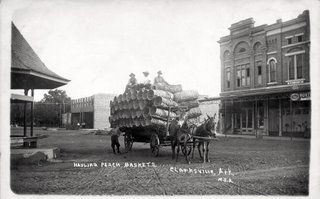 This wasn't any Sunday picnic peach picking operation, this was work. By the time these pictures had been taken, around 1905, the canning industry had been long established and well organized. The photograph above shows pickers sitting atop a wagon packed with over a thousand bushel baskets. Below we see field workers, both men & women, sorting through the day's harvest. Though these pictures were taken in Clarksville, Arkansas, the scene would have been repeated all over the nation, and have been especially familiar to those in the Mid-Atlantic states.
This wasn't any Sunday picnic peach picking operation, this was work. By the time these pictures had been taken, around 1905, the canning industry had been long established and well organized. The photograph above shows pickers sitting atop a wagon packed with over a thousand bushel baskets. Below we see field workers, both men & women, sorting through the day's harvest. Though these pictures were taken in Clarksville, Arkansas, the scene would have been repeated all over the nation, and have been especially familiar to those in the Mid-Atlantic states.
Jul 15, 2006
Jul 14, 2006
Jericho Covered Bridge

As long as the Jericho Covered bridge still stands, Harford County will think of itself as rural. No matter the 200,000+ residents, HARCO is rural. Right? Right. The bridge was completed in 1865 and features a Burr truss. It was listed in the National Register of Historic Places in 1978. More info here.
Photo: Canon EOS 20D © Kim Choate 2006
Jul 13, 2006
Graystone Lodge

"The solid stone building, which dates to 1780, probably began as a carriage house in the post-Revolutionary War era. From stories the Bavetts have pieced together and artifacts they have found, the lodge, vacant for the past three decades, has also seen life as an inn, an oyster house and probably a short-lived speakeasy." Read on.
Photo: Graystone Lodge (U.S. 1 & Old Joppa Road) Canon EOS 20D © Kim Choate 2006
Jul 12, 2006
Holiday House
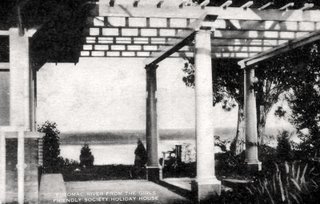 Postcard: "Potomac River from the Girls Friendly Society Holiday House" Alexandria, Virginia 1936
Postcard: "Potomac River from the Girls Friendly Society Holiday House" Alexandria, Virginia 1936
Jul 11, 2006
A Day at the Shore
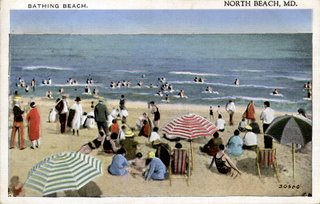 "Platted in 1900, North Beach celebrated its Centennial at the turn of the millennium. Socially and culturally, the town has a rich and diverse history. Originally settled primarily by part-time residents from nearby Washington and Baltimore, North Beach provided an ideal site for vacation cottages, as well as for those of the Chesapeake's working watermen. When the Bay bridge opened in 1955 bringing easier access to the Atlantic Oceans resorts, summer crowds on the western shore soon dissipated, and the end of legalized gambling later brought an end as well to the heyday of North Beach as a rollicking resort ..." Read On.
"Platted in 1900, North Beach celebrated its Centennial at the turn of the millennium. Socially and culturally, the town has a rich and diverse history. Originally settled primarily by part-time residents from nearby Washington and Baltimore, North Beach provided an ideal site for vacation cottages, as well as for those of the Chesapeake's working watermen. When the Bay bridge opened in 1955 bringing easier access to the Atlantic Oceans resorts, summer crowds on the western shore soon dissipated, and the end of legalized gambling later brought an end as well to the heyday of North Beach as a rollicking resort ..." Read On.
Photo: Postcard "Bathing Beach: North Beach, MD" Calvert County 1937
Jul 10, 2006
Perryman Post Office


The history of Harford County over the last 50 years can be summed up in two words: tract housing. And that isn't going to change any time soon. The people who've moved here are hard working, well meaning, and busy - very busy. Thus it's no wonder that a lot of the local history has fallen under the developer's bulldozer. Still, I think we all, no matter how busy, owe it to ourselves and our children to take a deep breath, as we wait for the next great onslaught of suburbanites, and think about what in this county is worth saving. And if you don't have time for a drive, you can see it here at Falmanac, from the comfort of your own high speed internet connection. Falmanac isn't planning any crusades, mind you, but we do have an eye for the unique and the old, and we hope we aren't on some sort of historical salvage mission - though recent county history tells us that we are.
Nevertheless, we can't mourn the loss of what we didn't know existed, which brings us to today's subject: The Perryman Post Office. This little building was built in 1914 and still functions today under the auspices of the United States Postal Service. I don't know how to describe how this structure makes me feel other than the fact that I like it. I think other people like it too, but I also think that a lot of people aren't even aware of it, tucked away on Michaelsville road like it is. Is it in imminent danger? No, but it is in Harford County where the cash is cold and the indifference deafening.
Jul 9, 2006
Sing Ho! for the life of a Bear!

Tai Shan, the National Zoo's panda cub, turns one year old today. This is what he looked like when we paid him a visit last winter: a panda in a bowl. These days he's much larger and spends most of his time napping in the trees, or bugging his mom. Like many households the world over, we watch him on the panda cam, and have grown fond of the little guy. We like watching his parents too.
Jul 8, 2006
Country Churches: Franklinville United Presbyterian
 "What can it be about Harford's Presbyterians and Greek revival architecture?," asks Christopher Weeks in his "Architectural History of Harford County." (I think I know, but that's way beyond the scope of this blog.) I can say that the trend stretches beyond Harford and into Baltimore County for at least a few hundred yards to Franklinville, Maryland.
"What can it be about Harford's Presbyterians and Greek revival architecture?," asks Christopher Weeks in his "Architectural History of Harford County." (I think I know, but that's way beyond the scope of this blog.) I can say that the trend stretches beyond Harford and into Baltimore County for at least a few hundred yards to Franklinville, Maryland.
Jul 7, 2006
Rock Run Mill

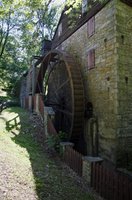
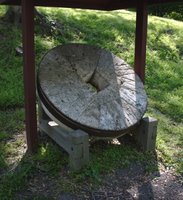




"Rock Run Grist Mill, erected in 1794 by John Stump, a prosperous businessman who owned several mills in Harford, Cecil, and Baltimore counties, is a three story stone structure and is fully operational. Inside are displays of 19th century farm and mill equipment. The water powered mill is operated during the summer months.
On weekends between May 1 and Labor Day, Rock Run Grist Mill comes alive when corn is ground into meal in public demonstrations held from 1 to 4 p.m. The meal is bagged and given free to the public. In addition there is a self-guided historical walking tour in the park with a brochure explaining in greater detail the individual points of interest." Read on.
We've blogged on other aspects of Rock Run here, here, & here.
Photos by Kim Choate using a Canon 20D dSLR camera.







